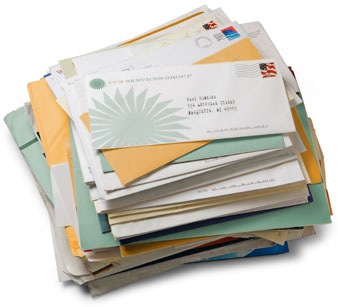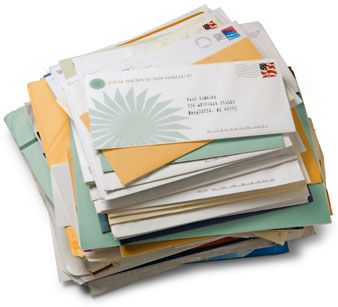Creating eMails Campaigns for Direct Mail Junkies How (…)

Direct Mail Advertising : Is Bigger Better?
Direct Mail Advertising: Is Bigger Better?
When it comes to direct mail advertising, you need to treat the mailbox like the toughest piece of real estate to occupy. The four keys to success include  understanding your data, the size and dimension of your mail, the content inside the envelope and testing.
understanding your data, the size and dimension of your mail, the content inside the envelope and testing.
It begins with determining a budget and best-case response rate results. The two go hand-in-hand. When you build a new house, you set the foundation before adding the walls. In this case, the desired response rate is the foundation and your budget represents the walls. The budget begins with the type of packaging you will use and what kind of offer or incentive you plan to include. Make sure to include postage and handling charges, which can be as much as 70 percent to 90 percent of the total costs.
Test Your Limits
Only the strongest mail offers survive. Testing helps you better understand your customer and prospect lists. Start with a small sample program before moving full-speed ahead on a major project.
1. An effective test begins with a targeted audience. You should have a clean, updated list to work from. When you run a small test sample, give yourself a potential 100 percent return rate without returns due to bad addresses or moves. Any mail house must use National Change of Address data to qualify for USPS presorted rates. Always request addresses back with changes—this way, you can update your database and assure its accuracy.
2. I would test by splitting the groups using different packaging and offering a separate incentive. Does a $1 off coupon get the job done, or will a two-for-one coupon tied to a website promotion work better?
3. Size does matter and testing bright colors is always recommended. Using standard #10 white envelopes will guarantee a low response rate, unless you are giving away money. That might work for blast mailings, where the response rate is measured to the right of the decimal point. Use testing to see what combination of size and colors stand out to your audience.
Size Has Impact Today
There are new reasons to test larger mailers in 2013, as well. For starters, dimensional, “bulky” mail is as far away from the plain envelope as you can get and often brings response rates to the left of the decimal point. That’s the sort of thing worth testing, especially now that the USPS offers simple sampling, which reduces the cost of sending a sample to the consumer.
Another reason is a USPS policy that went into effect on Jan. 27 requires all domestic parcels to use the new Intelligent Mail package barcode. The larger label forces marketers to rethink what goes on the front of any mailpiece, and larger mailpieces give you more room to work with. Testing will show you if that pays off.
With less outer space to work with, try using the inside to print a coupon or a message that leads recipients to a web site or a social media campaign. Another intrigue to test is using the center of the package for a free premium item. Of course, sending a game board, a membership card or pairing items—say a tube of toothpaste and a toothbrush—adds to the expense. But adding a QR Code to it with another offer could make the difference in generating a response.
Data and Loyalty
More marketers are shifting their budgets toward retention or rewards programs for existing customers. If your business is only comfortable with acquiring new customers, I recommend changing your thinking now.
The 80/20 acquisition strategies that took root in the 1980s—spending 80 percent of the marketing budget to find new customers and only 20 percent on existing customers—started changing in 2008, or about the same time the recent economic recession was taking hold. With more rewards and retention programs being offered, and with retailers and consumer packaged goods (CPG) companies leading the way, the dynamic has flipped.
Eighty percent of those budgets are now being used to expand and enhance the regular customer’s experience, with the 20 percent leftover used to mine and find new consumers. It’s easier to sell an existing client who is already familiar with your products or services.
Because a comfort factor has been established, the key is to give the client a reason to spend more. Many retailers have mastered this using customer data analysis. They target their marketing efforts based on past buying habits and how they can drive consumers to newer, more profitable items. Sharp automobile dealers use amazing analytics and know most of their customers come from within a 15-mile radius. They use lists to saturate specific, highly targeted ZIP codes, which can be accomplished at a reduced rate using the USPS Every Door Direct Mail program.
Keep your list fresh and updated. Purge deadwood and test well to find the best ways to target your selected audience with an enticing offer, eye-catching colors and impact shapes (ever consider a pop-up box?) to capture their attention.
If you need expert help and free advice about Direct Mail Advertising contact Ruben Leon at 1-800-227-6245
Article Author Information:
Rocky Abbett is vice president of St. Louis-based NOVA Marketing Services. Reach him atrabbett@novamktg.com, or for more information visit www.novamktg.com.![]()


What an exquisite article! Your post is very helpful right now. Thank you for sharing this informative one.
If you are looking for coupon codes and deals just visit coupon plus deals dot com